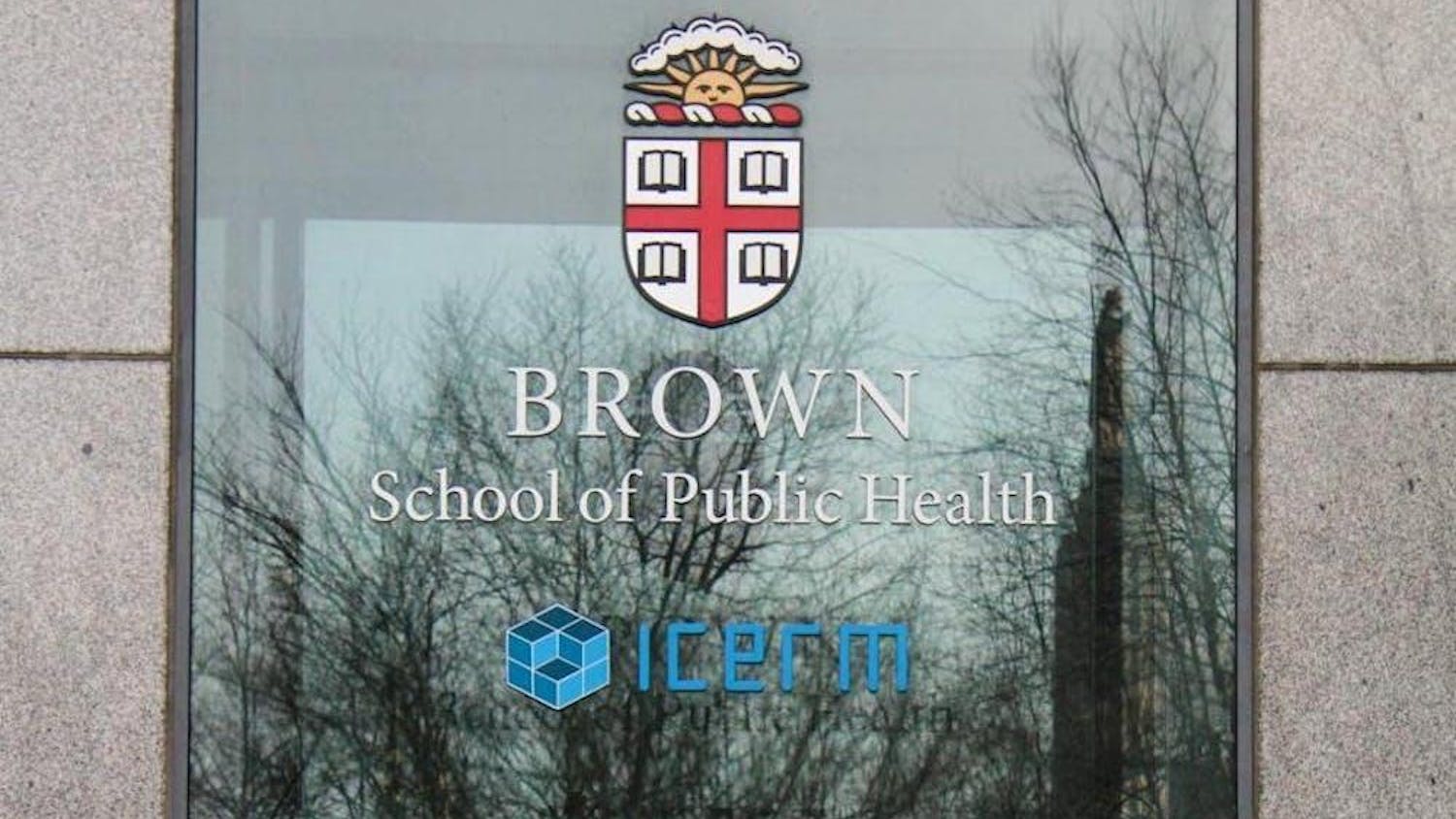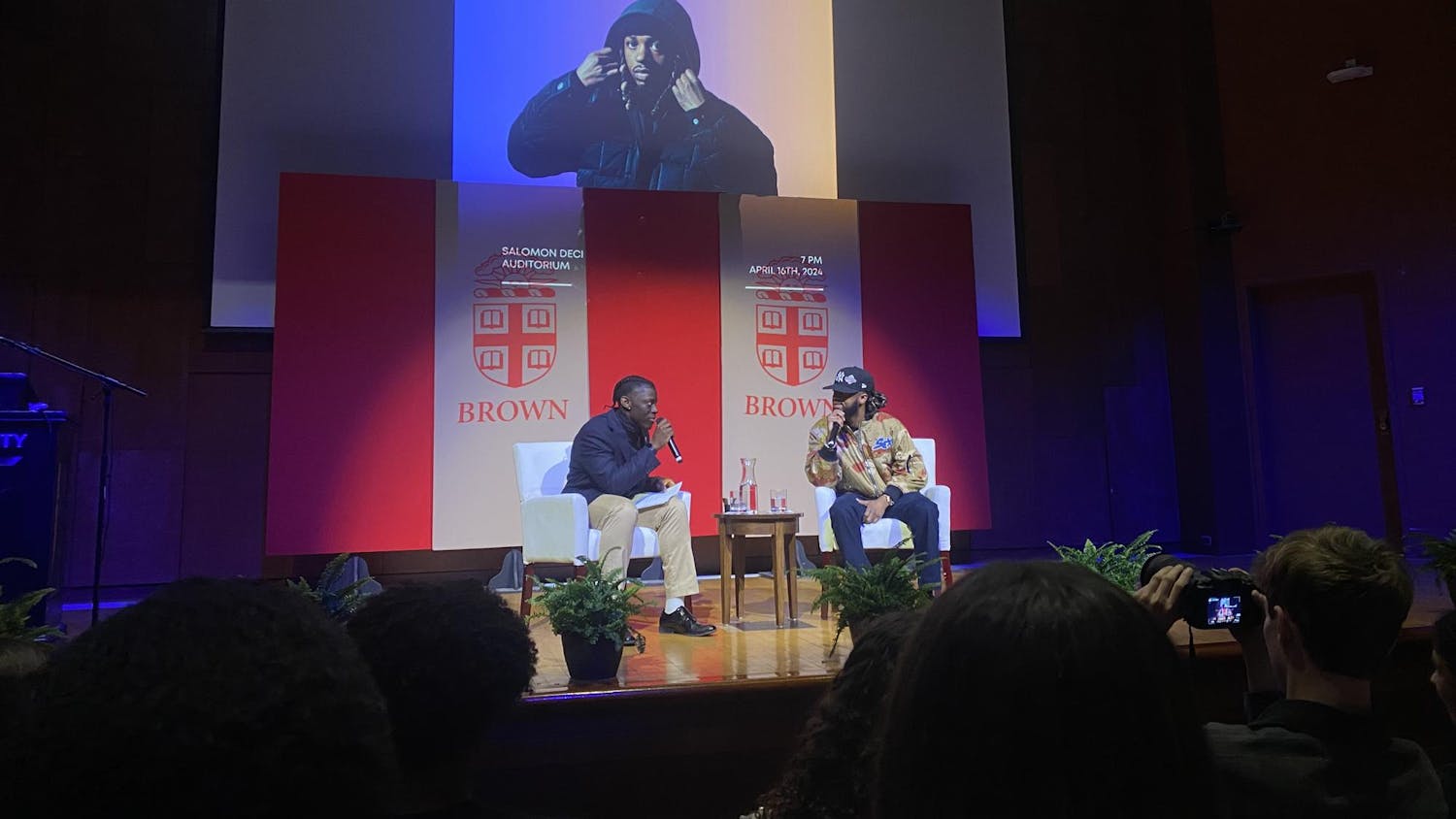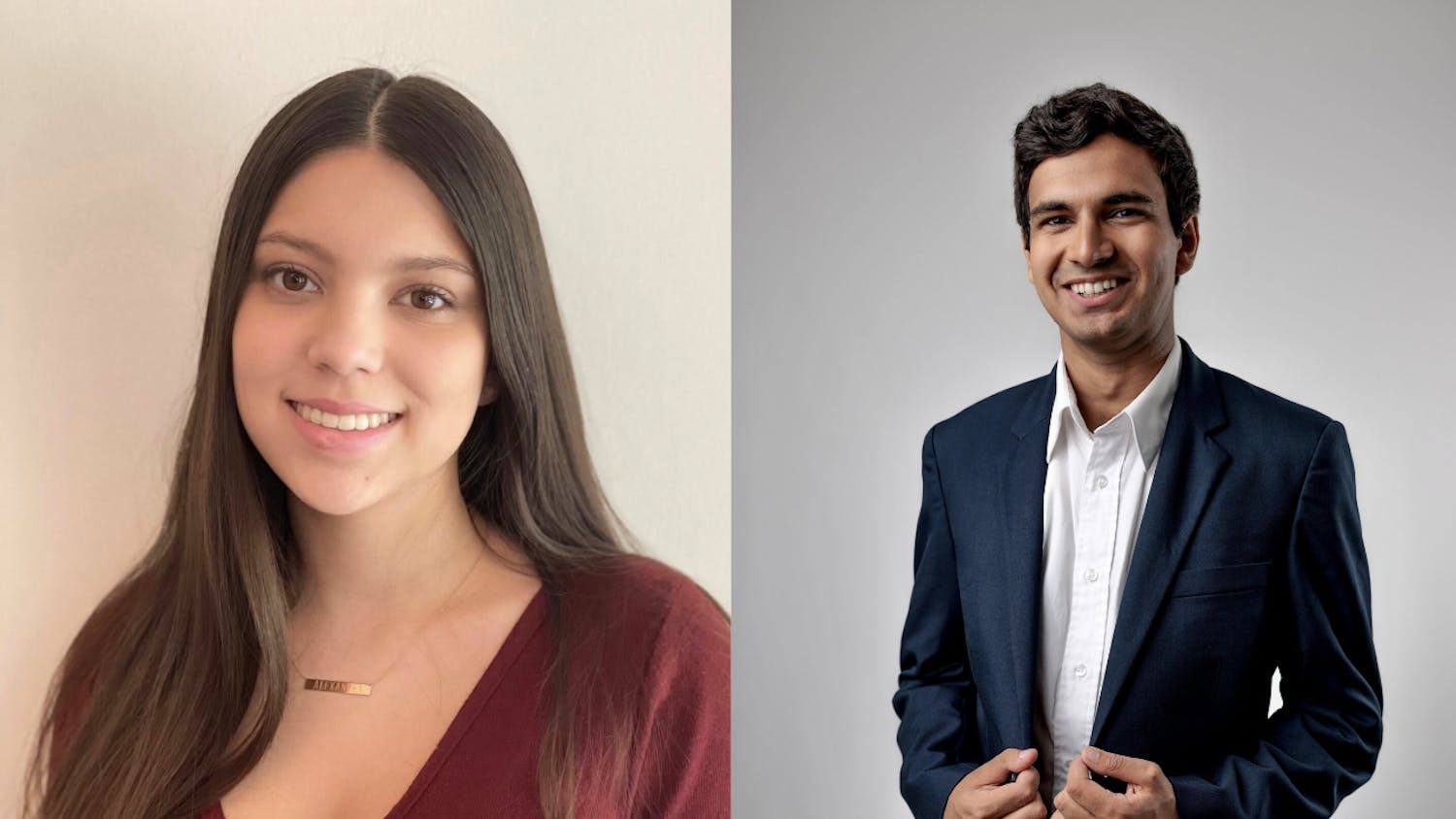This year, 30,136 students — 20.6 percent more than last year — filled out applications for undergraduate admission, painstakingly responding to the required short answer, "Why does Brown appeal to you?"
Now that 2,804 of those students have received offers of admission, translating to a record low acceptance rate of 9.3 percent, University administrators and higher education professionals are left unable to agree on a single response to another pertinent question: Why did Brown appeal to more than 30,000 students?
Instead, administrators and experts proposed different explanations for the wild surge in Brown's application rate, which has increased 65 percent in the four years since 18,316 students vied for spots in the class of 2010.
Higher nationwide application rates, a greater emphasis on recruiting low-income and minority students, and the weak economy — coupled with corresponding high levels of unemployment — have all induced Brown's largest-ever applicant pool, they said.
‘Going up across the board'
"Application numbers have been going up across the board," said Melissa Clinedinst, assistant director of research for the National Association for College Admission Counseling.
The number of applications to four-year American colleges increased by 20 percent from 2002 to 2006, according to NACAC's 2009 State of College Admission report.
Not only are there more high school graduates, but also a greater proportion of graduating seniors have decided to pursue higher education — and they are applying to more schools than they used to, according to the report.
Every Ivy League university except Yale received a record-high number of applications this year. Princeton saw a 19.5 percent growth in applications, going from 21,963 students hoping to enter the class of 2013 to 26,247 prospective 2014 graduates, according to an April 2 article in the Daily Princetonian.
"I haven't seen any school that's not up," said Michele Hernandez, a college consultant and author of three books on preparing for college admissions.
Since Harvard and Princeton dropped their early admission options in 2006, high-level students have started to apply to more regular decision schools than before, Hernandez said.
Michael Goran, director and educational consultant for IvySelect College Consulting, said he estimated that most students now apply to about 10 to 12 institutions.
Cydney Gillon, a senior at North Atlanta High School in Atlanta, applied regular decision to Brown along with 26 other schools, including every member of the Ivy League.
Her father wanted her to apply to 27 schools in order to have plenty of options for matriculation, she said. "My father pushed me to get a little more going," although Stanford and Brown were her top choices, Gillon said. She was not offered admission at Brown, but wrote in an e-mail to The Herald that she plans to attend the University of Pennsylvania unless she gets off the waitlist at Harvard.
Will they come?
But even as Brown's application rate has risen steadily over the last several years, its yield rate — the percentage of accepted students who enroll — has fallen every year since the class of 2010 applied, according to the Admission Office's Web site.
Only 53.1 percent of the 2,797 students accepted to the current freshman class enrolled, while 58.9 percent of the 2,555 students offered a spot three years ago decided to enroll.
Students who are admitted to Brown but do not attend usually matriculate instead to Harvard, Yale, Princeton or Stanford, according to Jim Miller '73, dean of admission.
Clinedinst said because more students now apply to a greater number of competitive schools, national yield rates have declined. Average yield at four-year institutions decreased from 49 percent in 2001 to 45 percent in 2007, according to the NACAC report.
"There's probably still a little bit of, ‘If I get into Yale … I'll probably go to Yale over Penn or Brown,' " Goran said, explaining the thought process of his students who are accepted to Brown along with other Ivy League institutions.
Hernandez said she thought 95 percent of her clients would accept an offer of admission from Yale over Brown.
Even international, minority and low-income students — whom the University recruits heavily — often reject offers of admission.
"We're not as well-known internationally as we'd like to be," said Matthew Gutmann, vice president for international affairs, about the University's efforts to try to convince students from abroad to apply to Brown.
For some of the international students who "are interested in a high-profile name," Brown did not have enough prestige, though he added that he did not think international students were any more influenced by name recognition than American applicants.
Similarly, high-performing minority and low-income students "know they're a commodity" and apply to and gain admission to many top-tier schools, Hernandez said. Especially for students from less affluent backgrounds, a school with a stronger name and reputation than Brown's is very attractive, she said.
‘Flight to quality'
The nationwide surge in applications coincides with a faltering economy, and high school students and their families are engaged in a "flight to quality," according to Miller.
"If I'm going to spend money, I'm going to spend it on a high-quality education," he said, explaining the mind-set of students and parents in precarious financial situations who decide to invest their money in a Brown education.
People view a Brown diploma as a wise investment, since it might ensure them a more lucrative, rewarding career later on, he said.
"An Ivy (League) degree is going to be worth more in the marketplace," said Goran, particularly "because of the economy and the uncertainty out there."
As the nation's unemployment rate has nearly doubled over the past five years — jumping from just over 5 percent in 2005 to almost 10 percent in 2010, according to the U.S. Bureau of Labor Statistics — the University has started to increase emphasis on student outcomes after graduation in admission literature.
"Outcomes are very important in an economically constrained environment," Miller said. "People are rightly concerned about outcomes."
Brown's ability to give people an invaluable skill set that they can bring to the workplace is nothing new, Miller said. But by stressing the high percentage of Brown graduates who go on to their top choices for law, medical and graduate schools and the success graduates find in the workplace, the Office of Admissions has been able to increase applicants' perception of Brown as a good economic investment, he said.
Many other schools have been less capable of capitalizing on the economic downturn to increase applications. The NACAC report described a poll of high school guidance counselors that found that students entering college in the fall of 2009 were more likely to enroll in public colleges instead of private schools, choose a community college over a four-year school or delay their college education because of financial concerns.
‘Money talks'
Brown has also improved its financial aid packages in response to the economic downturn, making a four-year stay on College Hill much more affordable for some students.
"We're actually less expensive for some students than their state schools," said Director of Financial Aid James Tilton. "Families are supported for the entire time that they're here."
The University only recently adopted need-blind admissions for U.S. applicants under a directive from President Ruth Simmons in 2002, becoming the last Ivy League institution to do so. Although international and transfer applications are still not need-blind, the change has allowed many low-income students to consider
Brown, whereas the school would have been entirely unaffordable for them 10 years ago, Miller said.
"That made a dramatic difference in our ability to recruit," Miller said.
Representatives from the Office of Financial Aid travel with admissions officers to communities with high levels of low-income, minority and first-generation college applicants in order to explain that Brown can be affordable, Tilton said.
The financial aid office's Web site has also allowed families to estimate the cost of a Brown education by comparing their incomes with several examples of financial aid packages, Tilton said.
Still, some applicants are wary that they will be unable to afford Brown, even if they get in.
"As much as I love Brown, money talks," said Shezza Shagarabi, a regular decision applicant from North Atlanta High School. She said that her family earns less than $100,000 per year, and that cost would inevitably influence her college plans.
Lauren Reed-Guy, a senior at Piedmont High School in Piedmont, Calif., said that although Brown was her top choice, she would need to "think about the whole family" when she decides this month where to study next fall.
Despite the Financial Aid Office's attempts to facilitate application for aid, Reed-Guy said she needed her parents' assistance to fill out all of her financial aid applications.
"That was sort of my parents' forte," she said. "I just really didn't know how to do it."
First-generation college applicant Jenna Frerichs from St. Joseph-Ogden High School in St. Joseph, Ill., said her parents could not offer the same level of support to her when she was applying for admission and financial aid at Brown.
"I don't think anybody else from my school applied to any Ivy Leagues," she said. Because she could not afford to travel to Rhode Island, Frerichs used the Internet to "just get answers on (her) own" about the New Curriculum, program housing and other aspects of life at the University.
Frerichs was rejected by Brown. Though accepted to the University of South Carolina, she wrote in an e-mail to The Herald that she hopes to spend next year teaching English in Spain and then plans to reapply early decision to the class of 2015.
Building Brown
Though Brown's name may not carry the same prestige as some of its peers', the University has increased its efforts to heighten its profile within the U.S. and internationally.
While less internationally recognized than some of its peers, Brown's academic prestige has increased while its applicant pool has grown.
"We need to get away from the notion that Brown is going global. Brown is global," Gutmann said.
Eighty-one countries are represented in the admitted class of 2014, according to a April 1 University press release, and Brown is "eager to reach out" to more international students, Gutmann said.
The University added new programs last year as part of its push to internationalize, The Herald reported in October.
The Corporation has nearly doubled the financial aid budget for international students, Tilton wrote in an e-mail to The Herald, bringing it to about $6.5 million for this academic year.
International students are particularly interested in the availability of undergraduate research, according to Gutmann.
Under the Plan for Academic Enrichment, which began in 2004, undergraduates have more "access to very elegant research opportunities" than ever before, Miller said.
Efforts to encourage minority and low-income applicants to apply have also increased in recent years.
This year, Brown partnered with QuestBridge, an organization that matches low-income students with scholarships at top universities. Miller said his office received 1,700 applications this year from QuestBridge students, most of whom are first-generation college applicants.
"Talent is not a function of socioeconomics," he said, explaining Brown's "opportunity and responsibility" to provide education to students from poor backgrounds who have a lot of potential.
Minority students currently enrolled at Brown will contact admitted black, Latino and Native American students this week under a new program to try to convince students to choose Brown over other colleges.
"This is a fiercely personal place," Miller said. He thinks these outreach efforts will help to "personalize a scary and somewhat impersonal process" and bring more minority students to campus.
What now?
The highlights of a Brown education — the New Curriculum and friendly environment — have been there for years, Miller said.
"I loved not having distribution requirements," said Elijah ben Izzy '14, a student from College Preparatory High School in Oakland, Calif. who was accepted early decision. Ben Izzy applied because of the University's long-standing liberal atmosphere, he said.
Some of the trends that have encouraged the applicant rate to rise, like the flagging economy or increasing number of high school graduates, may start to level off in the coming years.
But because Brown has continued to maintain a high-quality education, Miller said he does not expect to see large drops in application rates.
"The quality of students at Brown over the last couple of generations is just skyrocketing," he said, insisting that Brown will not lose popularity anytime soon.
More selectivity has led to a much more talented student body, Miller said. And since "large, large numbers" of applicants write on their applications that they hear about Brown from graduates, Miller added, any rise in applications and selectivity will produce a greater number of successful, unique Brown students who will encourage other quality students to apply to Brown.
"Ask almost any Brown graduates," reads one of the pamphlets sitting in the Office of Admissions. "And it is an excellent bet that they will say they feel deeply satisfied — grateful — that they chose Brown."
Unless that changes, application rates will not fall any time soon, Miller said.




